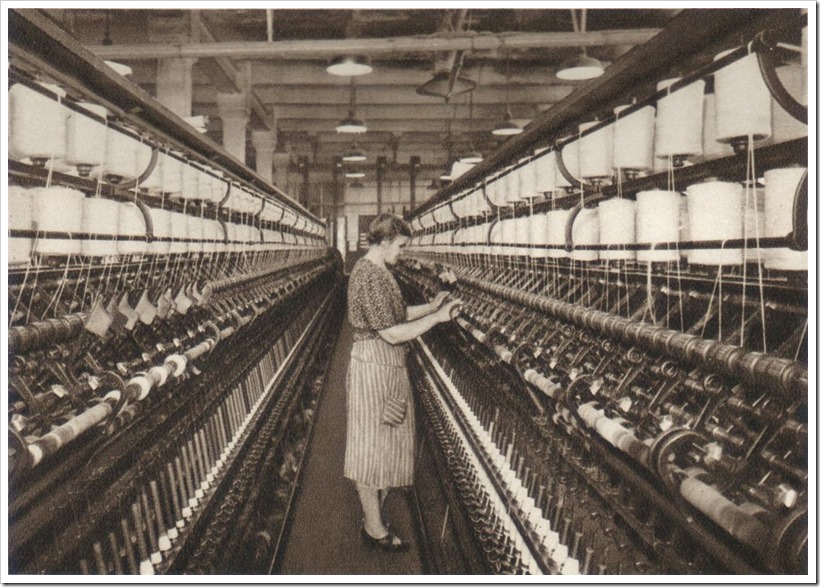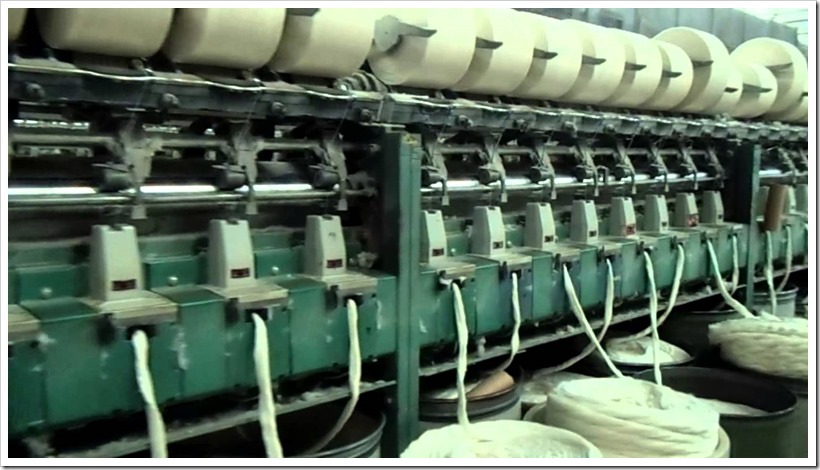This is a guest post by Stefano Aldighieri – a veteran in the denim industry . He writes about how denim has changed in the last few decades. More info about him at the end of the article.
It is hard not to get confused nowadays when going through all the endless options available in the blue fabric: so many weights, shades, fibers, finishes….almost everything we see has stretch, synthetic yarns blended in, high tech properties, futuristic functionalities.It is as if the old indigo dyed warp and natural weft cotton fabric does no longer serve its original purpose (hint: it does).
Levi Strauss & Co., Nevada Jeans, circa 1890. You could still wear them today. (well, if they were not worth more than $50,000 and if they were not locked in a vault!)
(1950s 501XX, I shot these in a vintage store. Should have bought them, one can never have too many pairs of these!)
The fact is, this incredible fabric has changed almost beyond recognition in the last few decades, and that is what prompted me to declare that “Denim is dead”; at least the real, original, legendary fabric is on the brink of extinction.
- Who Dunnit ?
- How did it happen?
- When?
- Why?
I asked myself these questions many times, and I can try to answer at least some of them.
To me, the demise started way back:
The year: 1967 | The location: ITMA Show, Basel, Switzerland.
(ITMA is the largest show in the world for textile manufacturing )
How: The first operational and production ready Open End (OE) Spinning frames were shown and sold to the trade. First lines were installed and running the same year.
The economic advantages were obvious: compared to conventional Ring Spinning (RS), a lower amount of investment was required, and the machines allowed a much greater production capacity of lower cost cotton yarns.The technology allowed the use shorter staple (read: cheaper and lower quality) cotton raw material, with shortened production cycle, and generated a very high output.The limitations were in the yarn counts (fine yarns cannot be spun on OE frames), and the reduced performance (tensile and tear, durability, etc.).
The yarns also had a very ‘clean’ look, without any of the characteristic unevenness of Ring Spun (no more ‘slubs’!). At the time, the jeans industry was growing very fast and the demand for the blue fabric was increasing just as fast; denim mills were struggling to keep up with production. Once they saw the opportunity to dramatically increase the capacity AND reduce the fabric costs, they jumped.
The big jeans brands – Levi Strauss & Co., Lee, Wrangler, and a whole slew of newcomers also jumped at the opportunity and quickly embraced the new technology; after all, it was a way to satisfy market demand for more product, and to ‘pile them high and sell them cheap’, as per ongoing marketing dictate.
A few ‘side effects’ occurred:
-
the weight of the denim had to increase to compensate for the reduced fabric performance. This is when 11-12 oz became 14-15oz, just to meet the minimum expectations of strength.
-
garment comfort decreased; OE is not nearly as soft as RS.
-
fabric aesthetics also changed; the clean, coarse look of OE is a far cry from the subtle uneven fine texture of a ring spun warp yarn; in order to change that, some devices (Amsler) were added to the OE spinning frames to create slub patterns that intended to replicate the look of real Ring Yarn (hint: it does not).
-
garments’ life span decreased; a good denim made with Ring yarn can last for many years (see above example!); a cheaper OE product will not. Adding to this the fact that at the same time jeans makers started to pre-wash the garments, and that over time industrial washes became very aggressive, at the end we were left with jeans with a short life span. (no problem, people will have to buy more!).
-
the cost of jeans started to decrease; this is a vicious process that started then and has yet to stop. Over the last decades, jeans are one of the very few products that not only did not see their cost adjusted to inflation, but actually kept falling. We pay LESS for denim today than we did 20 years ago (I would like you to go and try to buy a house, or a car, or a cup of coffee, for less money today than you did in the 90s).
-
the production of cheap denim fabrics has increased exponentially and surpassed the actual demand. A lower entry barrier allowed more people to produce cheap denim.
Side note: interestingly, this movement affected mostly North American, European and Chinese mills; in other parts of Asia the cost of manufacturing RS yarn was – and still is – highly competitive and there was no real reason to switch and make the investment. Oddly enough, it is more expensive to produce OE fabrics in such Countries than far better quality RS equivalent!
OE alone did not cause all the changes we see today, of course, it was just one massive shift. The other remarkable technological innovation was the move from narrow width, slow, shuttle weaving looms to far more efficient air jets, drapers and others. The jeans lost their colored selvedge – and a whole lot of character.Other market forces did the rest.
Denim gradually shifted from its original simple, functional, utilitarian origins to a “fashion” item, and fashion constantly demands “change”. No longer satisfied with the available options, brands and retailers started to demand a constant flow of so called “innovation”; in reality, all they wanted was to be able to offer something “new” to their customers, often under the guise of added comfort, functionality, sex appeal.
This brings us to what we see today: a sea of options, most of which in my opinion are perhaps redundant, which have very little in common with how the fabric looked, felt and performed.
In a not so distant future we are going to witness even more dramatic changes; traditional spinning, dyeing and weaving technologies will be replaced by non woven methods of manufacturing fabrics utilizing mostly recycled fibers, with even higher efficiencies, speed, cost reductions; these new technologies will require lower usage of energy and, most importantly, a drastic reduction in the amount of water needed in the process.Eventually, something that has almost nothing in common with traditional denim will be used to make jeans. I made a prediction about a decade ago, in an interview on Wired Magazine, that “non-wovens would take over the apparel market in 10-20 years”. I was obviously off on the timing, but I still feel it is the future, and we’d better start getting used to it.
It is called progress; we cannot cling to some nostalgic notion and keep manufacturing in a very inefficient way (our spinning, dyeing and weaving have not really evolved that much in the last couple of centuries).We simply cannot continue to waste natural resources in the name of ‘fashion’; land will need to be used to produce different crops other than cotton (you know, like stuff that people can eat), water usage must be dramatically reconsidered, and we must find a way to recycle that pesky 80% of apparel that ends up in landfills every year!
Our beautiful natural indigo, ring spun cotton, shuttle loom woven denims will become a smaller and smaller niche, and something that only collectors will be able to afford. No panic, it is not going to happen overnight! As we speak, BILLIONS of yards of denim are being produced in the conventional way, using both RS and OE yarns.We cannot stop it and we cannot turn back the hands of time; overall, it is probably for the best.
____________________________
About the Author Of this Article
Stefano Aldighieri is a globally recognized design and creative director with a comprehensive knowledge of the fashion industry. Holding two patents in garment construction, stefano has worked with startups and international organizations in four countries, acting as Creative Director for Hudson Jeans and 7 for all Mankind, CEO of Tuff Gong Clothing, and Design Director/R&D for Levi Strauss & Co.; in the last decade, he has consulted with brands, retailers and manufacturers around the world.









